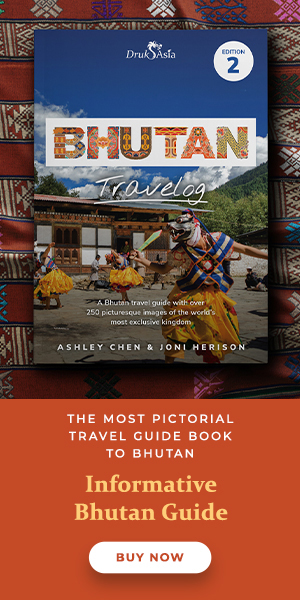BHUTAN
Travelog
Toughest Trek in the World - The Snowman Trek in Bhutan

If you’re looking for a trekking experience that pushes your limits and rewards you with jaw-dropping Himalayan views, pristine wilderness, and cultural immersion like no other—welcome to the Snowman Trek. This is Bhutan’s most challenging, most remote, and most breathtaking trek, and if you're ready for an adventure of a lifetime, you’ve just found it.
Let’s break it all down so you know exactly what to expect, how to prepare, and why this trek is truly something extraordinary.
What Is the Snowman Trek?
The Snowman Trek is often dubbed the toughest trek in the world—and for good reason. It takes you across some of the most remote high-altitude regions of Bhutan, skirting the border with Tibet, and crossing 11 high mountain passes, most of which are over 5,000 metres (16,400 feet).
Quick Facts:
-
Duration: 25 to 30 days
-
Distance: Roughly 300 km (190 miles)
-
Max Altitude: 5,320 m (17,450 ft) at Rinchen Zoe La
-
Number of Passes: 11 high-altitude passes
-
Start Point: Drukgyel Dzong, Paro
-
End Point: Lunana or Bumthang (depending on your route)
-
Best Time to Go: Late September to mid-October
What Makes It So Tough?
Let’s not sugar-coat it—this is not a walk in the park. The Snowman Trek is physically and mentally demanding, and it’s not for beginners. You’ll be trekking at high altitudes for extended periods, camping in freezing conditions, and hiking long hours through rugged terrain.

Here’s what you’ll face:
-
High Altitude: Altitude sickness is a real risk. You need proper acclimatisation and good fitness.
-
Remote Trails: There are no roads, no tea houses, no emergency exits. You're really out there.
-
Unpredictable Weather: Snow, rain, and cold can happen unexpectedly—even in the best season.
-
Logistics: Since it's so remote, everything (from food to tents) is carried by yaks or horses.
But for every ounce of effort, the reward is equally epic.
Why It’s Worth Every Step
Unspoiled Beauty
You’ll trek through glacial valleys, turquoise lakes, alpine meadows, and along ancient trade routes once used by yak herders. The landscapes are raw, untouched, and utterly spectacular.
Majestic Peaks
You’ll come face to face with towering Himalayan giants like Jomolhari, Jichu Drake, Masang Gang, and Gangkar Puensum (the world’s highest unclimbed mountain).
Rare Wildlife
This is snow leopard territory. You might not spot one, but the area is also home to blue sheep, Himalayan marmots, and even takins (Bhutan’s national animal).
Cultural Immersion
You’ll pass through isolated mountain villages where people still live traditionally. Expect warm smiles, ancient monasteries, and a deep sense of connection with Bhutan’s spiritual roots.

Bragging Rights
Only a few hundred people have ever completed the Snowman Trek. It’s one of the world’s rarest achievements in trekking—and you could be one of them.
Route Overview
There are a few route variations, but the classic trek runs from Paro in western Bhutan to Bumthang in the central region. Here’s a rough breakdown of the key sections:
Phase 1: The Warm-Up
Start in Paro and trek to Jangothang via Shana and Soe. Enjoy views of Mt. Jomolhari and acclimatise gradually.
Phase 2: Into the Wild
Cross high passes like Nyile La and Lingshi La. Pass Lingshi Dzong and remote villages like Chebisa.
Phase 3: Lunana Region
This is the heart of the Snowman Trek—wild, isolated, and beautiful. Cross Karchung La, Jare La, Rinchen Zoe La, and others. Camp near high-altitude lakes, glaciers, and yak herders’ huts.
Phase 4: Exit through Bumthang or Gorsum
Descend into forested valleys. Trek ends in Memi, Dur Hot Springs, or Bumthang, depending on the route.

What You Need to Prepare
Physical Fitness
You should be in excellent shape—able to hike 6 to 8 hours a day with altitude. Cardiovascular endurance, strength, and some experience with altitude treks are musts.
Mental Preparation
The remoteness can be challenging. It’s a good idea to prepare mentally for limited comforts, tough days, and unpredictable weather.
Packing Essentials
-
Layered clothing for warmth
-
Good trekking boots
-
Altitude medication (consult your doctor)
-
Water purification tablets
-
Headlamp, sunscreen, sunglasses
-
A down sleeping bag rated for sub-zero temperatures
A Licensed Tour Operator
Independent trekking isn’t allowed in Bhutan. You’ll need to go with a licensed Bhutanese tour operator like Druk Asia who handles guides, permits, horses/yaks, meals, and logistics.
Other Less Intensive Trekking Tours in Bhutan
Altitude Tips
-
Spend a few days acclimatising in Paro or Thimphu before starting.
-
Hydrate constantly.
-
Go slow, listen to your body, and don’t push through symptoms of AMS (Acute Mountain Sickness).
-
Your guide will monitor your health daily, but it’s good to be aware.
Best Time to Trek
The window for the Snowman Trek is narrow:
-
Late September to mid-October is ideal. The monsoon has ended, skies are clear, and snow hasn’t yet blocked the passes.
-
Some operators offer it in late June to early July, but this comes with risks of leeches and landslides due to the rainy season.
Is It for You?
This trek is not for everyone—and that’s okay.
It’s for you if:
-
You’re an experienced trekker with good fitness.
-
You want something truly off the beaten path.
-
You’re fascinated by Bhutanese culture and nature.
-
You don’t mind basic camping and being offline for weeks.
It’s not for you if:
-
You’ve never trekked at high altitude.
-
You’re looking for comfort and short hikes.
-
You’re not confident in remote wilderness settings.
The Snowman Trek isn’t just a physical journey—it’s a spiritual and emotional one, too. You’ll leave Bhutan not just with stronger legs and amazing photos, but with stories you’ll be telling for a lifetime.
If your soul’s craving something wild, raw, and rare—this is your sign to go for it.
Check out the Snowman Trek tour and other trekking packages in Bhutan.
Follow Druk Asia on social media for inspiring travel stories, breathtaking photos, and the latest updates from Bhutan.
Ready to Experience the Magic of Bhutan?
Fill in the form below and the friendly Bhutan Travel Specialist team will get back to you with expert advice, itinerary ideas, and everything you need to know. No obligations, just warm guidance from those who know Bhutan best.
Thank you for your message!
Hang tight—one of our friendly Bhutan Travel Specialists from Druk Asia will be reaching out soon with expert tips, insider advice, and exciting itinerary ideas to help you plan the adventure of a lifetime!
Discover
Breathtaking
Bhutan.
Thank you for subscribing!
You have successfully subscribed to our newsletter.




